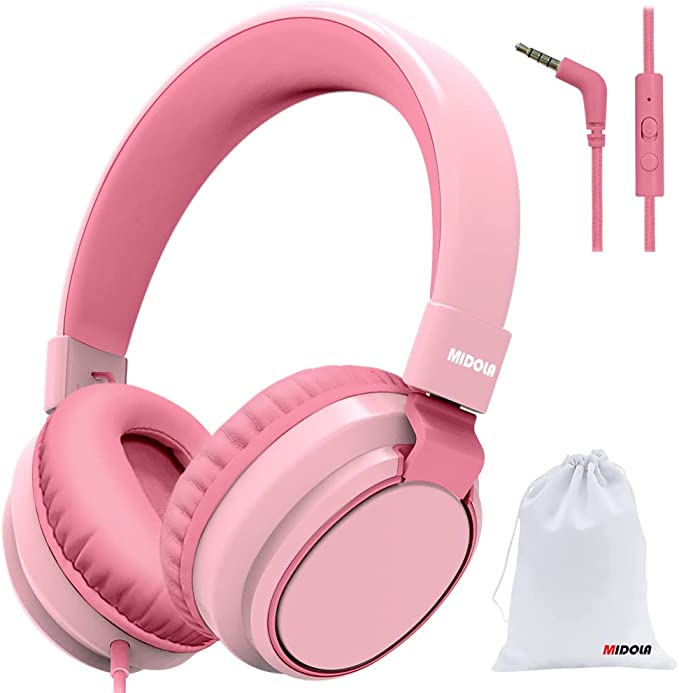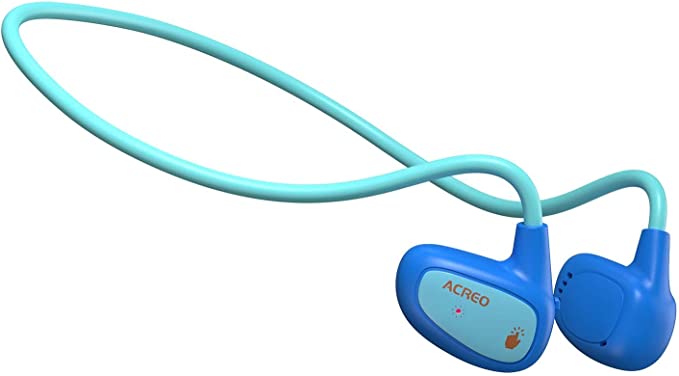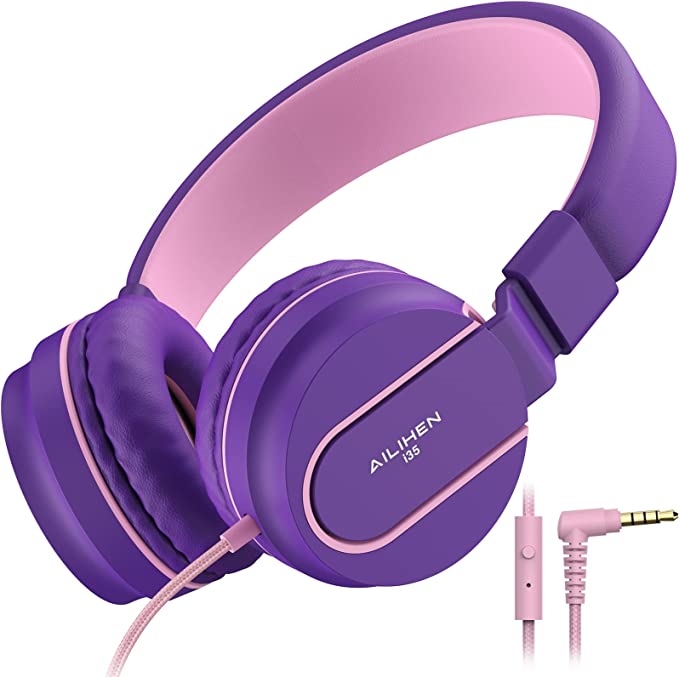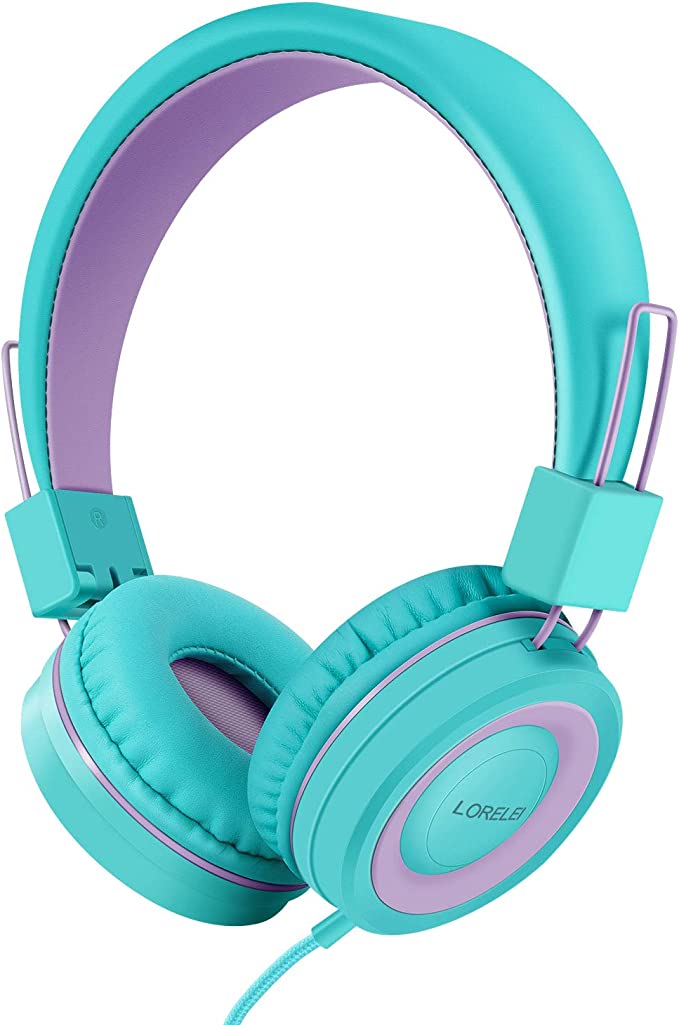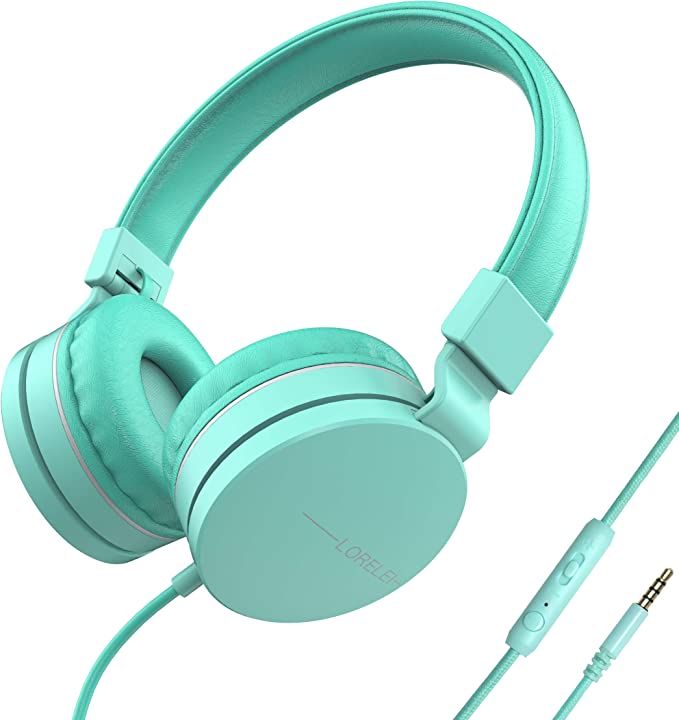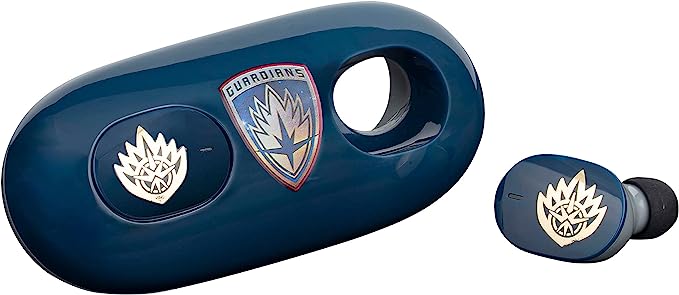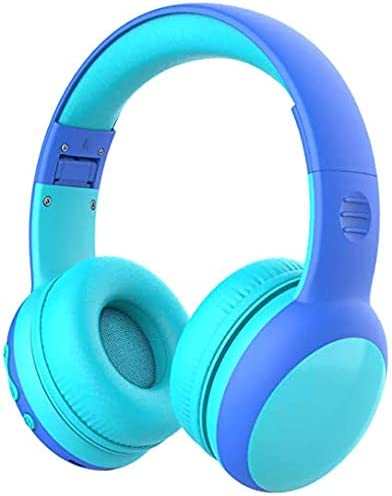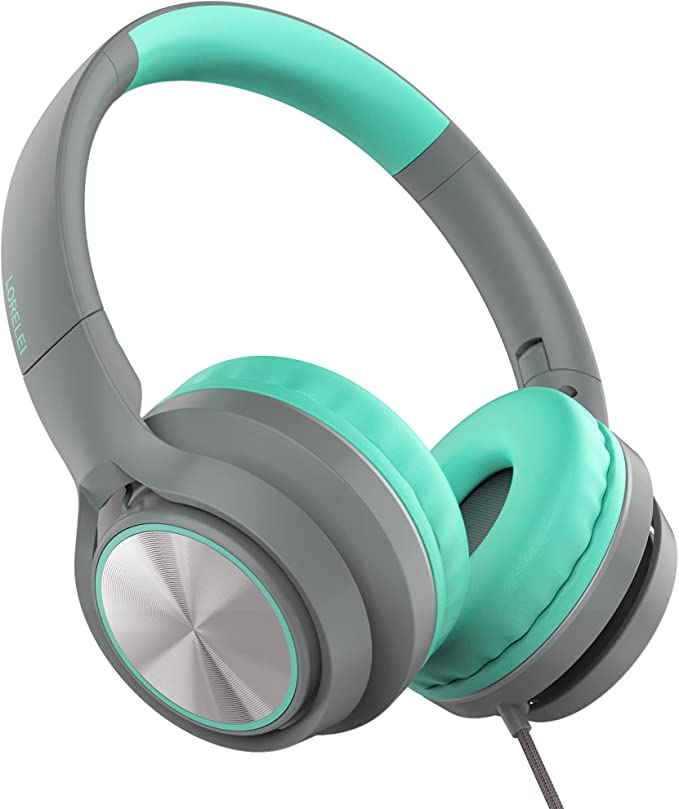QearFun QF3DCHPPu Kids Bluetooth Headphones: The Science of Fun, Comfort, and Wireless Sound for Young North American Explorers
Update on May 14, 2025, 4:44 p.m.
In the vibrant, often cacophonous world of children’s electronics, parents across North America frequently find themselves at a crossroads. Standing in an aisle, or scrolling through an endless webpage, a question bubbles up amidst the dazzling packaging and cartoon endorsements: “What really matters here? Beyond the immediate appeal, what makes a piece of technology a genuine friend to my child’s development, rather than just another fleeting distraction?” It’s a valid, vital question. Today, we’re not here to review a single product in isolation, but to use one – the QearFun QF3DCHPPu Kids Bluetooth Headphones – as a fascinating case study. Consider it a lens through which we can explore the thoughtful engineering, the subtle science, and the developmental considerations that can, and indeed should, be woven into the very fabric of technology designed for our youngest, most impressionable generation. Our guiding question is simple, yet profound: How can a seemingly straightforward pair of headphones become a conduit for joy, a tool for learning, a bridge for connection, and a passport for safe exploration into the ever-expanding universe of sound? Let’s embark on this journey of discovery together.

The Enchanted Glow: Where Light, Whimsy, and Visual Science Meet
One of the first things to capture a child’s attention with the QearFun headphones is undoubtedly their visual flair: the “Awesome 7 Colors LED Light Up” feature and the “Eye-catching 3D Cat Design.” This isn’t mere window dressing; it’s a carefully deployed invitation to engage, rooted in some fascinating science.
The “awesome” lights are the work of LEDs, or Light Emitting Diodes. Think of these not just as tiny blinking bulbs, but as miniature marvels of semiconductor physics. When electricity, a stream of electrons, passes through these specially crafted materials, the electrons get excited and then release their extra energy in the form of light. It’s a highly efficient process, which is why LEDs can produce such vibrant colors without generating much heat – a crucial safety aspect for any product designed to be in close contact with a child. But the science doesn’t stop at illumination. The dynamic, seven-color display taps into a child’s innate attraction to bright, changing stimuli. From a developmental perspective, such visual engagement can heighten curiosity, spark imaginative narratives (perhaps the lights are magical signals or a spaceship’s console!), and even subtly influence mood. Color psychology, while complex, suggests that a varied palette can be stimulating and joyful for young minds.
However, the designers also understood a critical aspect of sensory science: what is engaging for one child, or in one context, might be overwhelming for another, or at a different time. That’s why the ability to disable the LED lights is a stroke of quiet wisdom. It acknowledges that children have diverse sensory processing needs; some thrive on high stimulation, while others, perhaps those on the neurodivergent spectrum or simply winding down for the day, benefit immensely from a calmer visual environment. This simple on/off switch demonstrates a respect for the individual child and the varied rhythms of their day.
Then there’s the “feline factor”—the 3D Cat ears. Why do such anthropomorphic designs resonate so deeply with children? It’s more than just “cute.” Developmental psychology tells us that children are wired to connect with faces and familiar animal forms. These designs can make an otherwise inanimate piece of technology feel like a friendly companion, reducing any potential tech apprehension and fostering a sense of ownership and affection. The cat ears might transform the headphones into a character in their imaginative play, a trusty sidekick on their learning adventures. Visual design, in this context, becomes the handshake, the warm welcome that primes a child for a positive auditory experience.

Wireless Wings: The Physics of Freedom and the Safety of Unseen Tethers
The QearFun QF3DCHPPu headphones boast “Wireless” Bluetooth connectivity, a feature that, for parents of active youngsters, often translates to a sigh of relief. But what’s the science behind this untethered freedom?
Imagine Bluetooth as a remarkable, invisible conversation happening through the air. It’s a sophisticated technology that uses short-range radio waves – not unlike those that carry your favorite FM station, but on a much smaller, more personal scale – to transmit data. In this case, the “data” is the rich tapestry of sound, be it a favorite song, an audiobook, or a teacher’s voice. These sound signals are encoded, bundled into tiny “packets,” and then “beamed” from a device like an iPad or tablet directly to the headphones. Think of it as a personal, secure radio channel dedicated solely to your child’s audio experience. The pairing process, often a simple button press, establishes this exclusive link.
The most immediate benefit for a child is, of course, liberation. No more tangled cords restricting movement during an energetic dance session, an interactive learning game that requires them to stand up and participate, or simply while navigating a cluttered playroom. This freedom isn’t just about convenience; it’s about enabling natural, uninhibited physical expression, which is vital for healthy development. From a safety perspective, the absence of cords means one less potential entanglement hazard, a significant concern for parents of toddlers and younger children. Furthermore, the wire itself is often a weak point in traditional headphones, prone to fraying and breakage. Eliminating it inherently enhances the product’s potential durability.
It’s worth a gentle nod to the journey of audio technology. Many parents will remember the era of cumbersome wired headphones, a stark contrast to the sleek, wireless options available today. This evolution, driven by advancements in radio frequency engineering and miniaturization, directly benefits even the youngest users, allowing them to interact with their auditory world with an unprecedented degree of freedom and safety. These “wireless wings” truly allow a child’s imagination, and their body, to soar.

The Architecture of Comfort: Ergonomics, Materials, and the Art of a Gentle Embrace
A child might be initially captivated by lights and design, but long-term engagement with any wearable technology hinges critically on comfort. The QearFun headphones address this through several stated features: an “adjustable soft headband,” “skin-friendly ear pads,” an “Over Ear” design, and a “superior lightweight and foldable design.” These aren’t just bullet points; they are testaments to the intricate science of ergonomics and material selection.
Let’s start with pediatric ergonomics. Children are not merely scaled-down adults; their physiology is unique and rapidly changing. The “adjustable soft headband” is more than a convenience; it’s an ergonomic necessity. A child’s head circumference can increase significantly, especially between the ages of one and seven. A well-designed adjustable mechanism ensures the headphones can “grow” with the child, maintaining a snug but gentle fit. This isn’t just about avoiding discomfort; a proper fit ensures the earcups are correctly positioned over the ears for optimal sound delivery and can help in creating a consistent listening experience. The “Over Ear” design often contributes to this comfort, as it typically distributes pressure more evenly around the ear rather than directly on it, which can be crucial for preventing soreness during extended periods of use, such as online classes or long journeys. This design also offers a degree of passive noise isolation, creating a gentle “sound cocoon” that can help children focus by muffling some distracting ambient sounds.
The term “skin-friendly ear pads” speaks to the vital role of material science. While the specific materials aren’t detailed in the provided product description, the implication is the use of substances that are hypoallergenic, breathable, and soft to the touch. A child’s skin, particularly on the ears and surrounding areas, can be incredibly sensitive. Materials that trap heat, cause friction, or leach irritants can quickly turn a positive tech experience sour. Thoughtful material choice here is paramount for ensuring that “long-term wearing” remains genuinely comfortable.
The “superior lightweight” nature of the headphones is another nod to a child’s developing physique. Heavy headphones can cause undue strain on a young child’s neck and shoulder muscles. Achieving a lightweight feel without compromising durability is a balancing act of material science – often involving advanced, resilient plastics and lightweight cushioning foams. Finally, the “foldable design” is a piece of clever mechanical engineering. It’s not just about being “palm-sized” for easy storage in a school bag or suitcase; it involves designing robust hinges and a structure that can withstand the repeated stresses of folding and unfolding, a common action in the hands of an active child. True comfort, then, is a complex and beautiful equation, blending anatomical understanding, meticulous material selection, and thoughtful engineering – all dedicated to providing a gentle, supportive embrace for young listeners.

A Bridge of Voices: The Microphone, Connection, and the Sound of Learning
In our increasingly interconnected world, headphones often serve a dual role: they are portals for receiving information and also tools for projecting one’s own voice. The inclusion of a built-in “Mic” in the QearFun QF3DCHPPu transforms them from a passive listening device into an active instrument of communication and interaction.
But how does this tiny component capture a child’s exuberant chatter or their carefully considered answer in an online class? The magic lies in a device called a transducer. A microphone is essentially an acoustic-to-electric transducer. When a child speaks, their voice creates sound waves – subtle vibrations in the air. These sound waves travel and strike a very thin, sensitive membrane inside the microphone called a diaphragm, causing it to vibrate in sympathy. These physical vibrations are then cleverly converted into tiny electrical signals that mirror the pattern of the original sound waves. These electrical signals can then be transmitted—via Bluetooth, in this case—to a computer, tablet, or phone, allowing the child’s voice to be heard by others.
For a child in North America today, the applications are manifold and significant. Beyond the delightful calls with distant grandparents or virtual playdates with friends, a clear and functional microphone is a cornerstone of the modern educational experience. In online classes, it allows for active participation, for questions to be asked and answered, fostering a more engaging and effective learning environment. For interactive educational games, it might enable voice commands or collaborative problem-solving. Having their voice clearly heard can also be a tremendous confidence booster for young children as they learn to express their thoughts and ideas in a digital space. The microphone, therefore, is not just a technical specification; it’s a vital bridge, fostering connection, enabling learning, and empowering even the smallest voices to be part of the larger conversation.

The Guardian at the Gates of Sound: Nurturing Healthy Listening Habits (A Crucial Aside)
While the QearFun product description details many engaging features, it’s crucial for us, as responsible adults, to address a topic paramount to any discussion of children’s audio devices: hearing health. It’s important to note that the provided information for the QearFun QF3DCHPPu does not specify whether they include a built-in volume-limiting feature, which restricts the maximum sound output to a level generally considered safer for young ears (often around 85 decibels, as recommended by many audiological organizations). Regardless of whether a specific product has this feature, understanding the principles of safe listening is vital.
A child’s auditory system is a delicate and still-developing architecture. Their ear canals are smaller, which can effectively amplify sound, and they are often less able to discern or articulate when a sound is too loud. Prolonged exposure to excessive volume can, over time, lead to noise-induced hearing loss, a condition that is, regrettably, often irreversible.
Therefore, cultivating healthy listening habits from a young age is a gift that truly lasts a lifetime. Universally accepted wisdom from bodies like the World Health Organization and the American Academy of Pediatrics emphasizes moderation in both volume and duration. A general guideline often shared is the “60/60 rule”: listen at no more than 60% of the maximum volume for no more than 60 minutes at a time, followed by a listening break.
The parental role here is indispensable. It involves:
- Supervision: Being aware of how loudly and for how long children are using headphones.
- Education: Teaching children what “too loud” feels like and the importance of protecting their hearing.
- Modeling: Demonstrating sensible listening habits with their own audio devices.
- Choosing Wisely: When possible, selecting headphones that do incorporate volume-limiting technology or using parental controls on a connected device to manage output levels.
The greatest technology is that which is used with wisdom and foresight. Ensuring that the soundtrack of childhood is experienced safely is a responsibility we all share.
Concluding Thoughts: Weaving Wonder, Wisdom, and Well-being
As we’ve journeyed through the features of the QearFun QF3DCHPPu Kids Bluetooth Headphones, it becomes clear that a child’s piece of technology, when thoughtfully conceived, is far more than the sum of its parts. It’s a miniature tapestry, intricately woven from the threads of optical science that make lights dance, the radio engineering that sets sound free, the ergonomic principles that cradle a growing child in comfort, the material innovations that ensure a gentle touch, and the acoustic science that amplifies their voice.
In our increasingly tech-suffused world, particularly in North America where children often engage with digital devices from an early age, understanding the “why” behind product design is not just an academic exercise. It empowers us as parents, educators, and caregivers to make choices that genuinely nurture our children’s development – choices that deftly balance robust engagement with unwavering safety, and delightful fun with profound function.
The soundtrack of childhood is a vibrant, precious, and ever-evolving symphony. By approaching technology with a blend of curiosity, critical thinking, and an unwavering focus on well-being, we can help ensure that this soundtrack is not only joyful and entertaining but also enriching and, above all, safe for the young explorers charting their course through the world.
